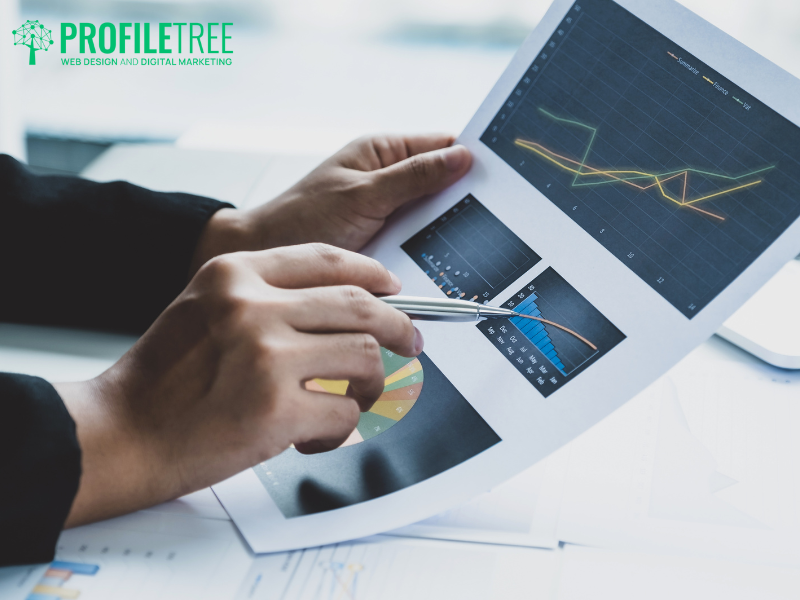Imagine, if you will, a treasure map etched in numbers, each metric a cryptic clue leading to untold riches. We, business analysts, are modern-day cartographers; our tools are not shovels and compasses but algorithms and statistical models. We navigate the twisting terrain of data, unearthing hidden patterns and uncovering correlations that whisper the secrets of your customers, your market, and your own internal processes.
But it is not all about crunching numbers and spitting out charts. The magic lies in the interpretation, the art of storytelling with data. We translate the cold logic of statistics into compelling narratives, painting vivid pictures of customer behaviour, operational inefficiencies, and hidden opportunities. We become trusted advisors, guiding decision-makers through the labyrinth of data and illuminating paths to growth, innovation, and success.
This is the art of business analysis in the age of data. It is about diving deep into the ocean of information, unearthing diamonds of insight, and polishing them into actionable strategies that guide your business towards success. So, buckle up, data adventurers, because we are about to plunge into the heart of the data in business statistics and explore the tools, techniques, and mindsets that will transform you from analysts into masters of the information age.
What is Data in Business Statistics?

Data in business statistics refers to the raw information or facts that are collected, observed, or measured. These data points can represent various aspects of a business, such as sales, expenses, customer preferences and behaviours, market trends, employee performance, and more. The goal of collecting and analysing data in business statistics is to extract meaningful insights and make informed decisions.
Types of Data
Data in business statistics can be broadly categorised into two types: quantitative data and qualitative data.

Quantitative data is the type of data that represents measurable quantities and is expressed in numerical terms. Examples include sales revenue, number of units sold, profit margins, and employee salaries. Quantitative data can further be categorised as discrete (countable) or continuous (measurable along a continuum).
On the flip side, qualitative data, also known as categorical or non-numerical data, describes characteristics or attributes that cannot be measured in numerical terms, such as customer satisfaction levels (e.g., “satisfied,” “neutral,” “dissatisfied”), product categories, or employee job roles.
Based on the entity that collects it, data can also be divided into two types. The first one is the primary data, which is collected directly by the organisation that is intending to use it. The second, as you may have guessed, is the secondary data, which is usually obtained from external sources.
Data Collection and Analysis
Data in business statistics is subject to two stages: collection and analysis.
The data collection stage incorporates a few steps. First of all, the objectives of data collection must clearly be outlined. This can be done by understanding what specific information is needed to address the business questions or goals.
Then, the data sources have to be identified. Where exactly is the required data located? This could involve internal sources such as company databases or records or external sources like surveys, market research, government reports, etc.
After that, the appropriate methods for data collection must be selected. Common methods include surveys, interviews, questionnaires, observations, experiments, and the analysis of existing records.
When all of this is all good and done, the data collection process can be launched. Once collected, the data is then ready to go into the second stage: analysis.
The first step in data analysis is to organise and prepare the collected data by sorting, cleaning, and transforming it into a format suitable for analysis. This should be followed by summarising and describing the main features of the dataset using some common measures like mean, median, mode, standard deviation, and range.
Next is to explore the data visually and statistically to identify patterns, trends, and relationships. Techniques can include histograms, scatter plots, and correlation analysis. Statistical models can be used to analyse relationships within the data and make predictions. This may involve regression analysis, time series analysis, or machine learning algorithms.
After that, inferences are made, and conclusions are drawn about a population based on a sample—we explained these concepts in a previous story. This involves hypothesis testing, confidence intervals, and regression analysis. Last but not least, the results of the analysis are interpreted in the context of the business objectives and used to make informed decisions.
Importance of Data in Business Statistics

So far, we broadly understand how much of a crucial role data plays in business statistics. But how exactly does it provide the foundation for informed, evidence-based decision-making?
Well, as it turns out, there are multiple other things that data helps with, which eventually lead to the development and growth of the business. So, let’s explore some of those.
First of all, data helps measure and evaluate the performance of various business processes, products, and services. Key performance indicators (KPIs) derived from data analysis assist in monitoring and assessing overall organisational success.
Secondly, data in business statistics enables the identification of trends and patterns within datasets. Recognising these patterns helps businesses understand consumer preferences, market dynamics, and potential areas for improvement. Analysing historical and current data also helps identify potential risks and uncertainties, which is crucial for developing risk mitigation strategies, ensuring business continuity, and minimising negative impacts.
Data also contributes to strategic planning. Businesses typically use statistical data to formulate and refine their strategic plans. This includes setting goals, allocating resources, and determining the most efficient strategies for achieving long-term success.
Besides, data is fundamental in market research, enabling businesses to understand their competitors and industry trends. This is essential for product development, marketing campaigns, and positioning within the market.
Leveraging data effectively also provides a competitive advantage. Businesses that can extract significant insights from data are more well-positioned to adapt to market changes, innovate, and stay ahead of competitors. Continuous monitoring and analysis contribute to ongoing quality enhancement efforts.
Yet, it does not stop at understanding the market. Data analysis provides substantial insights into customer behaviour, preferences, and satisfaction levels as well. This customer data lets businesses tailor their services and products so as to meet the expectations and needs of their target audience.
In business, the future can also somewhat be predicted with data. As statistical analysis of historical data supports forecasting future trends and outcomes, businesses can anticipate demand, manage inventory, and plan for future growth.
That all being said, some business owners may think that data in business statistics is a quality that, despite having proven effective, remains optional for them to use. Well, besides all the benefits we mentioned, businesses working in industries that have regulatory requirements that mandate the collection and reporting of specific data must use statistics to ensure compliance with legal and industry standards, avoiding potential penalties and legal issues.
Examples of Data-Driven Organisations
Embracing a data-driven approach has become a key competitive advantage in today’s business landscape, and many organisations across various industries have done that to gain insights, improve decision-making, and enhance their products and services.
On top of the list is the e-commerce giant Amazon. Amazon relies heavily on data analytics for various aspects of its business, including personalised product recommendations, inventory management, pricing optimisation, and logistics.
Google is also a pioneer in using data to enhance its services. It leverages large datasets for search algorithms, targeted advertising, and improving user experience across products like Google Search, YouTube, and Google Maps. Likewise, Facebook analyses user interactions and behaviours to personalise and deliver more relevant content, target advertising, and enhance user engagement.
The professional network LinkedIn uses data to provide personalised job recommendations, networking suggestions, and content tailored to individual user profiles.
Using data is not limited to social media platforms but also extends to companies from completely different industries, like Tesla. The electric vehicle and clean energy company relies on data from its vehicles to continuously improve software, enhance autonomous driving capabilities, and address performance issues. Uber also utilises data for dynamic pricing, route optimisation, and demand forecasting in a way that enhances the efficiency of its ride-sharing services.
IBM is another example. The gigantic technology and consulting company helps organisations become more data-driven by offering analytics solutions. IBM itself uses data analytics for various aspects of its business, including workforce management and client engagement.
The Future of Data in Business Statistics
The future of data in business statistics is expected to be shaped by several promising trends and developments, advancements in technology, increased data availability, evolving business needs, new opportunities, and unique challenges for businesses of all sizes. Here are some key aspects that may define the future of data in business statistics:
1. Artificial Intelligence (AI) and Machine Learning (ML): The integration of AI and ML into business statistics is likely to accelerate. These technologies can automate data analysis, identify patterns, and make predictions, enabling businesses to derive more sophisticated insights from their data.
2. Data Management: With the increasing volume of data being generated, businesses need effective strategies for managing and organising their data. This includes implementing robust data governance practices, ensuring data security, and leveraging cloud-based storage solutions.
3. Data Processing: Traditional methods of data processing are being replaced by more efficient techniques like real-time and stream processing. These approaches allow businesses to analyse data in real-time, respond quickly to changing circumstances, and make immediate, data-driven decisions.
4. Advanced Analytics: Businesses are increasingly adopting advanced analytics techniques such as predictive modelling and data visualisation to uncover hidden patterns and make accurate predictions about future outcomes.
5. Uncertainty Management: As markets become increasingly volatile and unpredictable, businesses are relying on statistical models and simulations to manage uncertainty effectively. This enables them to mitigate risks and make informed decisions even in uncertain environments.
6. IT Trends: Developments in IT infrastructure, including cloud computing, edge computing, and virtualisation, will enable businesses to store large amounts of data efficiently while improving accessibility for analysis purposes.
7. Big Data Advancements: The field of big data continues to evolve with advancements in storage technology, data processing algorithms, and data integration capabilities. These advancements allow businesses to handle and derive value from huge amounts of structured and unstructured data.
8. Data Privacy and Ethics: With growing concerns about data privacy, there will be an increased focus on ethical data practices. Businesses will need to adopt transparent and responsible data collection and usage policies to build and maintain trust with customers and stakeholders.
9. Interconnected Data Ecosystems: Businesses will continue to integrate data from several sources, both internal and external. This interconnected data ecosystem will enable more comprehensive analyses and a more holistic view of business operations, customers, and markets.
10. Continuous Learning and Adaptation: Business statistics will involve continuous learning and adaptation. Organisations will need to develop a culture of learning from data insights, adjusting strategies, and embracing a dynamic approach to decision-making.
Conclusion
The role of data in business statistics is undeniably transformative, offering organisations unprecedented opportunities for growth, innovation, and informed decision-making. As we traverse an era defined by digital acceleration and technological advancements, the power of data cannot be overstated. From enabling precise market insights and enhancing customer experiences to optimising operational efficiency and fostering strategic agility, data serves as the lifeblood of modern enterprises.
As the technology industry continues to advance and develop, the importance of data in driving business success will only grow. So, it is essential for businesses to invest in data collection, analysis tools, and skilled professionals to harness the power of data effectively.
FAQs
1. How can businesses ensure the quality and accuracy of their data?
Businesses can ensure the quality and accuracy of their data by establishing data governance policies, implementing a data quality framework, standardising data entry procedures, conducting data profiling, validating and verifying data, and ensuring quality assurance in data collection, among many other practices.
2. How do data privacy and security impact business statistics practices?
Stricter regulations and user concerns are tightening data access, pushing businesses to use smaller datasets, anonymise analysis, and prioritise privacy-preserving techniques. This forces statistical models to be leaner, transparent, and focused on broader trends while publicly communicated statistics become more anonymised and less individual-centric. Ultimately, it is a constant dance between gleaning valuable insights and respecting privacy expectations.
3. In what ways does data support innovation and product development in businesses?
Data acts as a fuel for innovation, powering businesses to understand customer needs (pain points and desires), test and refine ideas quickly, predict market trends, personalise products, and optimise resources. It is like having a superpower to make informed decisions and build products customers truly love.
4. How can businesses foster a data-driven culture within their organisations?
To ignite a data-driven culture, businesses must champion data from the top, equip everyone with analysis skills and tools, break down data silos for cross-team collaboration, celebrate data-driven wins, and present insights clearly and engagingly. It is a continuous journey, not a destination, but the rewards are innovation, agility, and customer-centricity.


